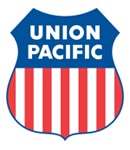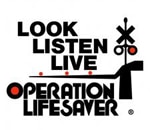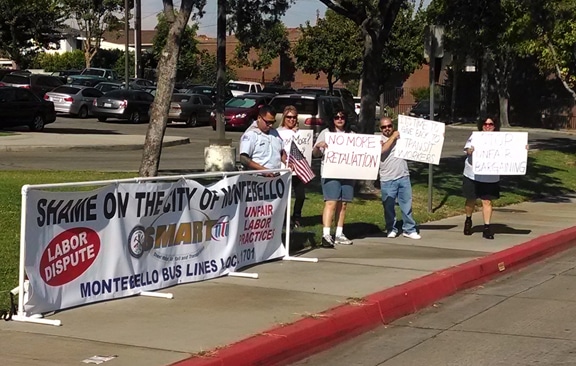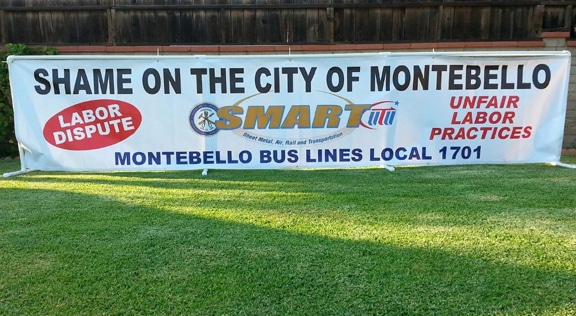After over four years of battling with New York’s Metropolitan Transportation Authority during a difficult and highly publicized contract dispute, SMART Transportation Division members have prevailed on Long Island.
The MTA was seeking net zero wage increases, major pension reform, large health care contributions, work rule give-backs and excessive concessions for new hires, but SMART leaders on Long Island had a much different agenda. They were determined to fight for their membership to obtain well-deserved raises and provide modest compromises to help fund the MTA pension system and the New York State Health Insurance Plan.
Lead negotiator for the MTA unions, Transportation Division GO 505 General Chairperson Anthony Simon, was a man on a mission. Simon worked tirelessly in achieving the political support and history necessary to prepare for the battle of a lifetime for railroaders on Long Island through the use of two separate Presidential Emergency Boards. Achieving two labor-favorable boards was key in this long, down and dirty battle with the MTA. The unions on Long Island were days away from a strike that they were very prepared to implement if needed.
Simon and his committee stood toe to toe with the MTA in a fight that eventually required New York State Gov. Andrew Cuomo to engage with Simon in unprecedented, overnight negotiations which, in turn, avoided a devastating strike on the busiest commuter railroad in the nation.
While things became heated and the MTA pulled out all the stops by utilizing the media against union workers, Simon continually pledged to the public through his own media outlets his loyalty and dedication to the riders of the system.
“From day one, we made it clear that labor did not want to inconvenience the public and did everything in its power to avoid a strike,” Simon said.
As frustrated as both union members and members in the community were becoming as the potential strike loomed, Simon and SMART leaders maintained the highest level of professionalism possible.
At the end of the day, a deal was settled that provided in excess of 18 percent of compounded wage increases over six-and-a-half years. Certification pay was achieved in the amount of $10 per day worked as a conductor and a modest two percent health and welfare contribution was accepted, based on a straight week’s pay. Minor adjustments were made for new hires that extended their requirement to pay four percent toward their pension for five additional years and their current wage progression was extended by just two years. Not a single work rule was compromised for anyone.
“I have been working under Anthony’s leadership since 2006 and have known him for over 20 years. He is an absolute tenacious leader who works harder than anyone I have ever met in my life,” GO 505 Vice General Chairperson Vinnie Tessitore said.
Simon and the entire SMART membership on Long Island Rail Road thank General President Joe Nigro and Transportation Division President John Previsich, along with their team, for their endless support through this process. The committee on Long Island Rail Road would also thank the entire SMART membership across the nation for their well wishes and support. The outcome of this labor dispute exemplifies what the labor movement is all about.
Year: 2014

Four railcars came off the tracks at around 2 a.m. PDT (0900 GMT), three of which were carrying crude oil, said BNSF, which is owned by Berkshire Hathaway. The train originated in North Dakota and was bound for Tesoro Corp’s 120,000 barrel-per-day Anacortes oil refinery, 80 miles (129 km) north of the city, Tesoro confirmed.
Read the complete story at Reuters.
Star in your own Video Selfies.
SMART is looking for Short Videos on why the Blue/Yellow Union Labels are important to you.
What does it mean to your work and income?
Answer the question by saying: I look for the SMART Union Label because…..?
Remember when recording on a phone, hold it landscape or horizontal.
Send your clips to members@smart-union.org or you can upload it on FaceBook then post a link to it or share it via the FaceBook “share” tool
on your Union’s Facebook page at
If you make the cut, you will be featured at SMART’s First General Convention.
Everyone who submits a video will be automatically entered into a drawing to win a new Kindle.
The U.S. Department of Transportation today released the details of its comprehensive rulemaking proposal to improve the safe transportation of large quantities of flammable materials by rail – particularly crude oil and ethanol – in the form of a Notice of Proposed Rulemaking (NPRM) and a companion Advanced Notice of Proposed Rulemaking (ANPRM).
The NPRM proposes enhanced tank car standards, a classification and testing program for mined gases and liquids and new operational requirements for high-hazard flammable trains (HHFT) that include braking controls and speed restrictions. Specifically, within two years, it proposes the phase out of the use of older DOT 111 tank cars for the shipment of packing group I flammable liquids, including most Bakken crude oil, unless the tank cars are retrofitted to comply with new tank car design standards. The ANPRM seeks further information on expanding comprehensive oil spill response planning requirements for shipments of flammable materials. Both the NPRM and ANPRM are available for review on www.regulations.gov and will now be open for 60 days of public comment. Given the urgency of the safety issues addressed in these proposals, PHMSA does not intend to extend the comment period.
“Safety is our top priority, which is why I’ve worked aggressively to improve the safe transport of crude oil and other hazardous materials since my first week in office,” said Secretary Foxx. “While we have made unprecedented progress through voluntary agreements and emergency orders, today’s (July 23) proposal represents our most significant progress yet in developing and enforcing new rules to ensure that all flammable liquids, including Bakken crude and ethanol, are transported safely.”
The July 23 NPRM is based on an ANPRM published by the Pipeline and Hazardous Materials Safety Administration (PHMSA) last September, and reflects feedback from more than 152,000 commenters. Specifically, PHMSA will seek comment on the following provisions:
Defining the term “high-hazard flammable train” (HHFT).
- Proposes a definition of HHFT as a train carrying 20 or more tank carloads of flammable liquids (including crude oil and ethanol).
Better classification and characterization of mined gases and liquids.
- Proposes development and implementation of a written sampling and testing program for all mined gases and liquids, such as crude oil, to address:
- frequency of sampling and testing;
- sampling at various points along the supply chain;
- sampling methods that ensure a representative sample of the entire mixture;
- testing methods to enable better analysis, classification, and characterization of material;
- statistical justification for sample frequencies; and,
- duplicate samples for quality assurance.
- Proposes that offerors be required to certify that sampling and testing program is in place, document the testing and sampling program, and makes program information available to DOT personnel, upon request.
Rail routing risk assessment.
- Proposes that carriers be required to perform a routing analysis for HHFT that would consider 27 safety and security factors and select a route based on findings of the route analysis.
Notification to State Emergency Response Commissions.
- Proposes to codify DOT’s May 2014 emergency order that require trains containing one million gallons of Bakken crude oil to notify State Emergency Response Commissions (SERCs) or other appropriate state delegated entities about the operation of these trains through their States.
Reduced operating speeds.
- Requests comment on three speed restriction options for HHFTs that contain any tank cars not meeting the enhanced tank car standards proposed by this rule:
- a 40-mph maximum speed restriction in all areas;
- a 40-mph speed restriction in high threat urban areas[1]; and,
- a 40-mph speed restriction in areas with a 100K+ population.
- If tank cars in the HHFT meet specifications finalized in the enhanced tank car section of this rule, speed would be limited to 50-mph in all areas (rather than 40-mph).
- PHMSA also will evaluate a 30-mph speed restriction for HHFTs that do not comply with enhanced braking requirements.
Enhanced braking.
- Proposes to require all HHFTs to be equipped with alternative brake signal propagation systems. Depending on the outcome of the tank car standard proposal and implementation timing, all HHFTs would be operated with either electronic controlled pneumatic brakes (ECP), a two-way end of train device (EOT), or distributed power (DP).
Enhanced standards for both new and existing tank cars.
- Proposes new standards for tank cars constructed after October 1, 2015 (and that are used to transport flammable liquids as part of a HHFT) (e.g., thermal, top fittings, and bottom outlet protection; tank head and shell puncture resistance). PHMSA is requesting comment on three options for enhanced tank car standard requirements:
- Tank car option 1 would have 9/16 inch steel, would be outfitted with electronically controlled pneumatic (ECP) brakes and would be equipped with rollover protection.
- Tank car option 2 would also have 9/16 inch steel but would not require ECP brakes or rollover protection.
- Tank car option 3 is based on a 2011 industry standard and has 7/16 inch steel, and does not require ECP brakes or rollover protection
- Proposes to require existing tank cars that are used to transport flammable liquids as part of a HHFT be retrofitted to meet the selected option for performance requirements. Those not retrofitted would be retired, repurposed, or operated under speed restrictions for up to five years, based on packing group assignment of the flammable liquids being shipped by rail.
PHMSA will concurrently publish an ANPRM on oil spill response plans, specifically current thresholds and their applicability to rail, in part in response to an NTSB recommendation issued in January 2014.
In addition to issuing the NPRM and ANPRM, PHMSA concurrently released a report summarizing the analysis of Bakken crude oil data gathered by PHMSA and FRA between August 2013 and May 2014. The data show that crude oil from the Bakken region in North Dakota tends to be more volatile and flammable than other crude oils. Collected as part of Operation Classification (OSD), a joint PHMSA and Federal Railroad Administration (FRA) effort, the data were initially gathered to verify that crude oil was being properly classified in accordance with federal regulations, and evolved to include more robust testing to better understand the characteristics of the product.
The safety risk presented by transporting Bakken crude oil by rail is magnified both by an increasing volume of Bakken being shipped by throughout the U.S. and the large distances over which the product is shipped. In 2008, 9,500 rail-carloads of crude moved through our country compared to last year, when there were 415,000 rail-carloads. Moreover, on average Bakken crude oil shipments travel over 1,000 miles from point of origin to refineries on the coasts.
PHMSA and FRA plan to continue the sampling and analysis activities of Operation Safe Delivery through the summer and fall of 2014working with the regulated community to ensure the safe transportation of crude oil across the nation.
Click here for additional information on the steps the Department of Transportation has already taken to help strengthen the safe transport of crude oil by rail.

For a list showing all candidates and the board’s recommendations, click here. Candidates that are marked as “no” on the list have repeatedly voted against labor in the past and have shown that they do not support the goals of the Missouri State Legislative Board. Candidates on which the board expresses no opinion are listed as “open.”
The board asks that all members from Missouri vote their paycheck by voting for the endorsed candidates.
If you are unsure of the voting district in which you reside, click here.
Candidates being endorsed by the Missouri State Legislative Board are as follows:
| Name | Position | District |
| Lacy Clay | U.S. Representative | 1 |
| Nate Irvin | U.S. Representative | 4 |
| Emanuel Cleaver II | U.S. Representative | 5 |
| Joe Keaveny | State Senator | 4 |
| Maria Chappelle-Nadal | State Senator | 14 |
| Jill Schupp | State Senator | 24 |
| Robert Stuber | State Senator | 34 |
| Mike Waltemath | State Representative | 2 |
| Nate Walker | State Representative | 3 |
| Robert Harrington | State Representative | 6 |
| Jim Neeley | State Representative | 8 |
| Pat Conway | State Representative | 10 |
| Galen Hidgon Jr. | State Representative | 11 |
| Sandy Van Wagner | State Representative | 12 |
| Jon Carpenter | State Representative | 15 |
| Mark Ellebracht | State Representative | 17 |
| Kevin Garner | State Representative | 18 |
| John Rizzo | State Representative | 19 |
| John Mayfield | State Representative | 20 |
| Ira Anders | State Representative | 21 |
| Brandon Ellington | State Representative | 22 |
| Randy Dunn | State Representative | 23 |
| Judy Morgan | State Representative | 24 |
| Jeremy LaFaver | State Representative | 25 |
| Gail Beatty | State Representative | 26 |
| Bonnaye Mims | State Representative | 27 |
| Tom McDonald | State Representative | 28 |
| Noel Torpey | State Representative | 29 |
| Sheila Solon | State Representative | 31 |
| Jeanie Lauer | State Representative | 32 |
| Donna Pfautsch | State Representative | 33 |
| Kenneth Duvall | State Representative | 35 |
| Kevin McManus | State Representative | 36 |
| Joe Runions | State Representative | 37 |
| Dan Dildine | State Representative | 41 |
| Bart Korman | State Representative | 42 |
| Ed Lockwood | State Representative | 43 |
| Kip Kendrick | State Representative | 45 |
| Stephen Webber | State Representative | 46 |
| John Wright | State Representative | 47 |
| Gracia Backer | State Representative | 49 |
| Gary Grigsby | State Representative | 51 |
| Henry Grubb | State Representative | 53 |
| Patty Johnson | State Representative | 56 |
| William Grimes | State Representative | 57 |
| Tom Smith | State Representative | 61 |
| Anne Zerr | State Representative | 65 |
| Tommie Pierson | State Representative | 66 |
| Sylvester Taylor II | State Representative | 67 |
| Keith English | State Representative | 68 |
| Margo McNeil | State Representative | 69 |
| Bill Otto | State Representative | 70 |
| Sue Meredith | State Representative | 71 |
| Mary Nichols | State Representative | 72 |
| Courtney Curtis | State Representative | 73 |
| Sharon Pace | State Representative | 74 |
| Rochelle Walton Gray | State Representative | 75 |
| Joshua Peters | State Representative | 76 |
| Kimberly Gardner | State Representative | 77 |
| Penny Hubbard | State Representative | 78 |
| Michael Butler | State Representative | 79 |
| Mike Colona | State Representative | 80 |
| Jacob Hummel | State Representative | 81 |
| Mi chele Kratky | State Representative | 82 |
| Gina Mitten | State Representative | 83 |
| Karla May | State Representative | 84 |
| Clem Smith | State Representative | 85 |
| Joe Adams | State Representative | 86 |
| Stacey Newman | State Representative | 87 |
| Tracy McCreery | State Representative | 88 |
| Deb Lavender | State Representative | 90 |
| Jeanne Kirkton | State Representative | 91 |
| Genise Montecillo | State Representative | 92 |
| Bob Burns | State Representative | 93 |
| Vicki Lorenz Englund | State Representative | 94 |
| John McCaherty | State Representative | 97 |
| John Callahan | State Representative | 102 |
| Michael Swyers | State Representative | 102 |
| Kyle Schlereth | State Representative | 103 |
| Kathie Conway | State Representative | 104 |
| Matt Judkins | State Representative | 105 |
| Chrissy Sommer | State Representative | 106 |
| Ron Hicks | State Representative | 107 |
| Bobbie Bollmann | State Representative | 109 |
| Michael Frame | State Representative | 111 |
| Robert Butler | State Representative | 112 |
| T.J. McKenna | State Representative | 114 |
| Elaine Gannon | State Representative | 115 |
| Kevin Engler | State Representative | 116 |
| Linda Black | State Representative | 117 |
| Ben Harris | State Representative | 118 |
| Dave Hinson | State Representative | 119 |
| Ethan Newman | State Representative | 125 |
| Charlie Norr | State Representative | 132 |
| Angie Filbeck | State Representative | 135 |
| Don Phillips | State Representative | 138 |
| Paul Fitzwater | State Representative | 144 |
| Charles Elrod | State Representative | 145 |
| Duston Stone | State Representative | 148 |
| Diedra Freeman | State Representative | 149 |
| Walter Dearing | State Representative | 149 |
| Ryan Holder | State Representative | 151 |
| Hugh Shields | State Representative | 161 |

The NPRM proposes enhanced tank car standards, a classification and testing program for mined gases and liquids and new operational requirements for high-hazard flammable trains (HHFT) that include braking controls and speed restrictions. Specifically, within two years, it proposes the phase out of the use of older DOT 111 tank cars for the shipment of packing group I flammable liquids, including most Bakken crude oil, unless the tank cars are retrofitted to comply with new tank car design standards. The ANPRM seeks further information on expanding comprehensive oil spill response planning requirements for shipments of flammable materials. Both the NPRM and ANPRM are available for review on www.regulations.gov and will now be open for 60 days of public comment. Given the urgency of the safety issues addressed in these proposals, PHMSA does not intend to extend the comment period.
“Safety is our top priority, which is why I’ve worked aggressively to improve the safe transport of crude oil and other hazardous materials since my first week in office,” said U.S. Department of Transportation Secretary Anthony Foxx. “While we have made unprecedented progress through voluntary agreements and emergency orders, today’s (July 23) proposal represents our most significant progress yet in developing and enforcing new rules to ensure that all flammable liquids, including Bakken crude and ethanol, are transported safely.”
The July 23 NPRM is based on an ANPRM published by the Pipeline and Hazardous Materials Safety Administration (PHMSA) last September, and reflects feedback from more than 152,000 commenters. Specifically, PHMSA will seek comment on the following provisions:
Defining the term “high-hazard flammable train” (HHFT).
- Proposes a definition of HHFT as a train carrying 20 or more tank carloads of flammable liquids (including crude oil and ethanol).
Better classification and characterization of mined gases and liquids.
- Proposes development and implementation of a written sampling and testing program for all mined gases and liquids, such as crude oil, to address:
- frequency of sampling and testing;
- sampling at various points along the supply chain;
- sampling methods that ensure a representative sample of the entire mixture;
- testing methods to enable better analysis, classification, and characterization of material;
- statistical justification for sample frequencies; and,
- duplicate samples for quality assurance.
- Proposes that offerors be required to certify that sampling and testing program is in place, document the testing and sampling program, and makes program information available to DOT personnel, upon request.
Rail routing risk assessment.
- Proposes that carriers be required to perform a routing analysis for HHFT that would consider 27 safety and security factors and select a route based on findings of the route analysis.
Notification to State Emergency Response Commissions.
- Proposes to codify DOT’s May 2014 emergency order that require trains containing one million gallons of Bakken crude oil to notify State Emergency Response Commissions (SERCs) or other appropriate state delegated entities about the operation of these trains through their States.
Reduced operating speeds.
- Requests comment on three speed restriction options for HHFTs that contain any tank cars not meeting the enhanced tank car standards proposed by this rule:
- a 40-mph maximum speed restriction in all areas;
- a 40-mph speed restriction in high threat urban areas[1]; and,
- a 40-mph speed restriction in areas with a 100K+ population.
- If tank cars in the HHFT meet specifications finalized in the enhanced tank car section of this rule, speed would be limited to 50-mph in all areas (rather than 40-mph).
- PHMSA also will evaluate a 30-mph speed restriction for HHFTs that do not comply with enhanced braking requirements.
Enhanced braking.
- Proposes to require all HHFTs to be equipped with alternative brake signal propagation systems. Depending on the outcome of the tank car standard proposal and implementation timing, all HHFTs would be operated with either electronic controlled pneumatic brakes (ECP), a two-way end of train device (EOT), or distributed power (DP).
Enhanced standards for both new and existing tank cars.
- Proposes new standards for tank cars constructed after October 1, 2015 (and that are used to transport flammable liquids as part of a HHFT) (e.g., thermal, top fittings, and bottom outlet protection; tank head and shell puncture resistance). PHMSA is requesting comment on three options for enhanced tank car standard requirements:
- Tank car option 1 would have 9/16 inch steel, would be outfitted with electronically controlled pneumatic (ECP) brakes and would be equipped with rollover protection.
- Tank car option 2 would also have 9/16 inch steel but would not require ECP brakes or rollover protection.
- Tank car option 3 is based on a 2011 industry standard and has 7/16 inch steel, and does not require ECP brakes or rollover protection
- Proposes to require existing tank cars that are used to transport flammable liquids as part of a HHFT be retrofitted to meet the selected option for performance requirements. Those not retrofitted would be retired, repurposed, or operated under speed restrictions for up to five years, based on packing group assignment of the flammable liquids being shipped by rail.
PHMSA will concurrently publish an ANPRM on oil spill response plans, specifically current thresholds and their applicability to rail, in part in response to an NTSB recommendation issued in January 2014.
In addition to issuing the NPRM and ANPRM, PHMSA concurrently released a report summarizing the analysis of Bakken crude oil data gathered by PHMSA and FRA between August 2013 and May 2014. The data show that crude oil from the Bakken region in North Dakota tends to be more volatile and flammable than other crude oils. Collected as part of Operation Classification (OSD), a joint PHMSA and Federal Railroad Administration (FRA) effort, the data were initially gathered to verify that crude oil was being properly classified in accordance with federal regulations, and evolved to include more robust testing to better understand the characteristics of the product.
The safety risk presented by transporting Bakken crude oil by rail is magnified both by an increasing volume of Bakken being shipped by throughout the U.S. and the large distances over which the product is shipped. In 2008, 9,500 rail-carloads of crude moved through our country compared to last year, when there were 415,000 rail-carloads. Moreover, on average Bakken crude oil shipments travel over 1,000 miles from point of origin to refineries on the coasts.
PHMSA and FRA plan to continue the
sampling and analysis activities of Operation Safe Delivery through the summer and fall of 2014working with the regulated community to ensure the safe transportation of crude oil across the nation.
Click here for additional information on the steps the Department of Transportation has already taken to help strengthen the safe transport of crude oil by rail.

Matthew Mancil loves trains.
“I don’t know how it started, but he just absolutely loves them,” Aaron Mancil, Matthew’s father, said.
Read the complete story at the Deseret News.
(Do you know who this conductor is? Email us at news_TD@smart-union.org.)

Israel Maldonado, a Union Pacific risk management representative, told Lodi City Council on Tuesday morning that he would like to visit local schools, churches and businesses to present safety and accident prevention tips for when drivers or pedestrians are near railroad tracks.
Read the complete story at the Lodi News-Sentinel.
MONTEBELLO, Calif. – SMART Transportation Division Local 1701 bus members here July 9 picketed outside Montebello City Hall prior to and during a meeting of city council to bring attention to their dispute with city over wages, rest periods, meal periods and payment of pension contributions.
Approximately 30 members attended the picket that was organized by Local President Rachel Burciaga and Local Chairperson Cecilia Lopez.
The members of Local 1701 come under the jurisdiction of General Committee of Adjustment BNSF Railway GO 020 and General Chairperson Tom Pate serves as the local’s chief negotiator. The employees voted for SMART representation in 2012 and the local’s charter was issued on Jan. 1, 2013.

“The city of Montebello doesn’t want change to improve the quality of life for either its full-time or part-time transit employees,” Pate said. “Local 1701 is still a young organization within SMART, but I can feel the momentum building among its membership.”
“We’ve been in negotiations for the last two years. Everything we have brought to the table, they say no to,” Lopez said. “We ask for a pay increase, they say no. But there’s money for special projects to repave the streets of Montebello, get new buses and hire new supervisors.”
She said the transit employees last received a pay raise in 2008.
Member Javier Olvera also expressed his exasperation outside the council meeting.
“We haven’t got a raise for six years and the cost of living is increasing. Now, instead of giving us a raise, they want to take away eight percent. That’s less food on the table for my kids and my family,” said Olvera, a bus operator for the past 11 years.

Olvera was referring to the dispute over who should pay for the employees’ share of pension costs. During the last year, the city has paid its nontransit employees’ share of their pension costs, but not for bus drivers, mechanics and service operators.
For more information about Local 1701’s labor dispute, see this article in the Whittier Daily News.

A former BNSF employee named Curtis Rookaird, a conductor for the railway for six years, says he was fired in 2010 for insisting that he perform certain safety checks over the objections of his supervisor.
Read the complete story at Public Radio International.